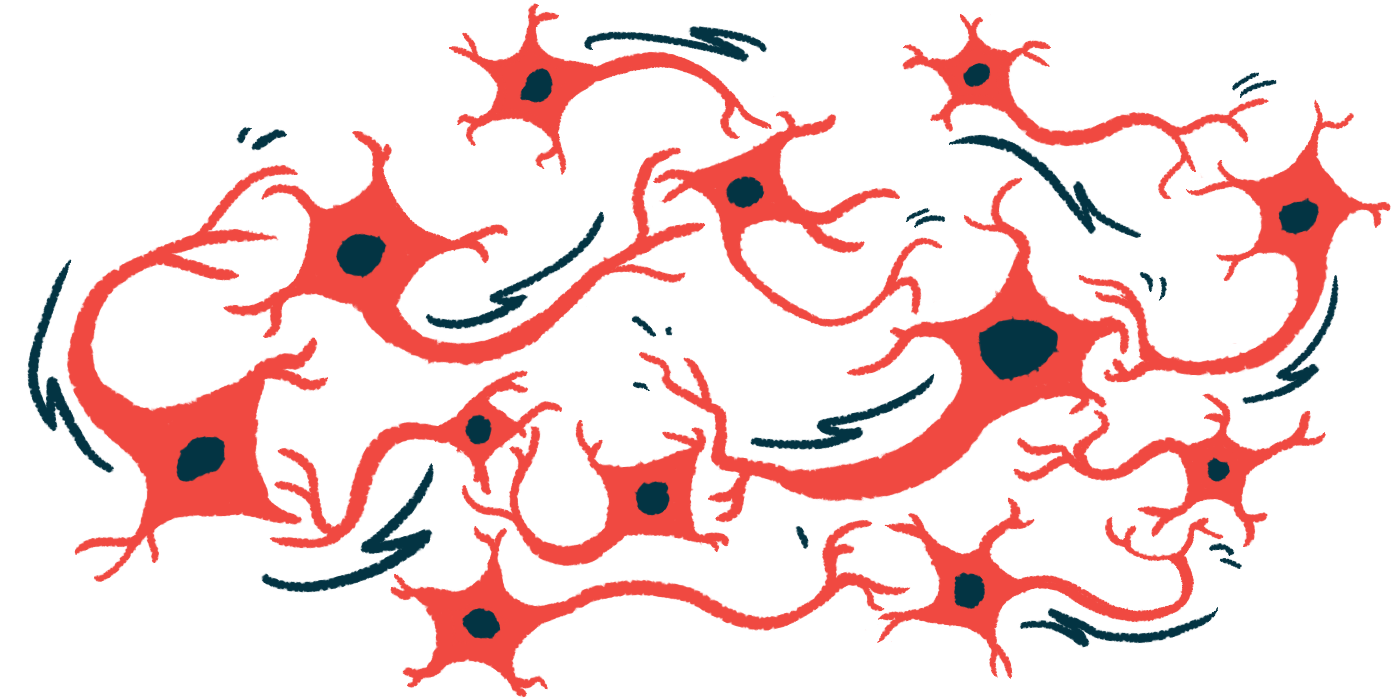Organoid model can replicate neural network of human ‘reward system’
3D brain model may be used to improve cell therapies for Parkinson’s

Researchers have developed a three-dimensional brain organoid — a “mini-organ” model of the brain — that replicates a human neural network known as the “dopaminergic reward pathway” in structure and function.
Despite the importance of the neurotransmitter dopamine in Parkinson’s disease, key mechanisms of this brain system are not yet understood, mainly due to the lack of an appropriate model that recapitulates, or mimics, the human dopaminergic system.
Brain organoids are derived from human stem cells, which are able to grow into certain cell types, including brain cells. They can be used to study human brain structure, connectivity, and function.
“Our method opens new avenues to investigate human dopaminergic cell transplantation and circuitry reconstruction,” researchers wrote in the study “In vitro modeling of the human dopaminergic system using spatially arranged ventral midbrain–striatum–cortex assembloids,” which was published in the journal Nature Methods.
Parkinson’s marked by progressive loss of dopaminergic neurons
Parkinson’s disease is caused by the progressive dysfunction and death of nerve cells responsible for producing dopamine, called dopaminergic neurons, primarily found in a part of the brain called the substantia nigra.
Dopamine is a neurotransmitter, a chemical messenger in the brain that plays a crucial role in various physiological functions. It is associated with the brain’s reward system, motivation, and pleasure, and is involved in regulating mood, attention, and movement. It helps transmit signals between nerve cells, influencing a wide range of cognitive and motor functions.
While the loss of dopaminergic neurons is implicated in the progression of Parkinson’s disease, the specific mechanisms that underlie this loss and potential strategies for prevention or repair of the dopaminergic system remain unclear.
Now, researchers have developed an organoid model that recapitulates the dopaminergic system’s morphology, nerve projections, and functionality.
“We sought to develop an in vitro model that recapitulates these human features in so called brain organoids,” Daniel Reumann, PhD, one of the study’s researchers, said in a press release. “Brain organoids are human stem cell derived three-dimensional structures, which can be used to understand both human brain development, as well as function.”
The team first developed organoid models of brain regions involved in the dopaminergic system — the ventral midbrain (which includes the substantia nigra), striatum, and cortex — using growth factors that allow for human stem cells to grow into neurons specific for each region.
Brain organoids are human stem cell derived three-dimensional structures, which can be used to understand both human brain development, as well as function.
Then, they developed a method for joining the three organoids into so-called assembloids, using custom embedding molds. As occurs in the human brain, the dopaminergic neurons of the midbrain organoid sent out nerve projections to organoids of the striatum and cortex, which are brain regions involved in motor control.
“Somewhat surprisingly, we observed a high level of dopaminergic innervation, as well as synapses forming between dopaminergic neurons and neurons in striatum and cortex,” Reumann said. Synapses are gaps between nerve cells where communication occurs through the release and reception of neurotransmitters.
When the dopaminergic neurons in the midbrain were stimulated, they led to a response in neurons of the striatum and cortex. “We successfully modeled the dopaminergic circuit in vitro, as the cells not only wire correctly, but also function together,” Reumann said.
The model can be used to improve cell therapies, which involve the transplantation of human cells to replace damaged neurons, for Parkinson’s disease, according to the researchers. These therapies have not yet provided consistent results in clinical studies in which precursors of dopaminergic neurons were injected into the striatum.
In the study, the researchers demonstrated that if dopaminergic precursor cells are injected into the new organoid model, they can mature into neurons and extend neuronal projections.
“This allows researchers to study how progenitors can be differentiated more efficiently and provides a platform which allows to study how to recruit dopaminergic [projections] to target regions,” said Jürgen Knoblich, PhD, also a study author.
Model can be used to study addiction to certain drugs
The model can also be used to study addiction to certain drugs that disturbs the dopaminergic reward pathway. The researchers observed structural and functional changes in the dopaminergic system when these organoids were chronically exposed to cocaine, changes that persisted for a long period after withdrawal.
“This further strengthens the key relevance of brain organoids as models to study neuronal circuit formation and the effects of environmental factors on neuronal circuits,” the researchers wrote. It also “enables the possibility of pharmacological investigation of the dopaminergic system.”
Despite their great potential, organoids lack blood vessels that vascularize the tissues, have incomplete neuronal maturation, and do not fully recapitulate the human brain structure. As such, “[f]urther work could address these issues, for example by creating perfused or vascularized tissues, or by artificially speeding up neural maturation,” the researchers wrote.








